In this article
The quest to conquer the “world’s hardest” climb ignites a universal fascination, a drive to touch the absolute limits of human potential on rock. But “hardest” isn’t a singular crown; it’s a multifaceted gem, reflecting different challenges across sport climbing, bouldering, trad climbing, and alpine disciplines. This title is dynamic, constantly reshaped by new ascents and evolving community consensus. We’ll explore the routes and climbers defining this cutting edge, aiming to answer the question: what is the hardest climbing route in the world?
The 9c Frontier: Pinnacle of Sport Climbing Difficulty
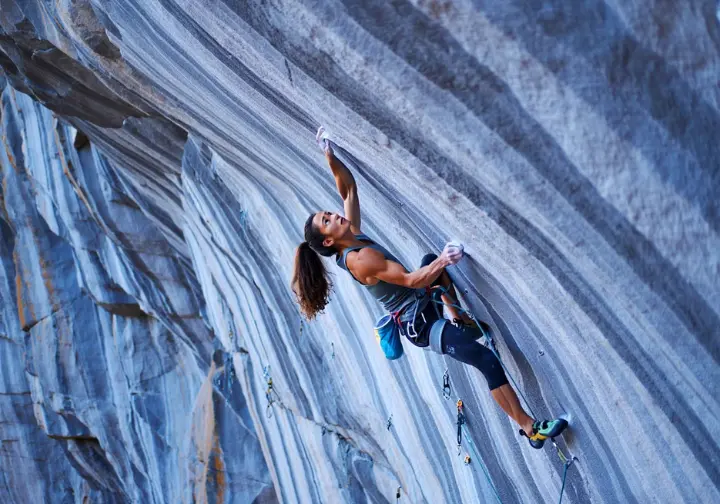
The climbing grade of 9c (5.15d) represents a rarefied realm in sport climbing. This section examines the hardest routes currently proposed at this level, the climbers who established them, and the benchmark 9b+ sport routes that pave the way. We will look into the world’s hardest sport climbing route and the elements that make a 9c climbing route so incredibly demanding. This is where the top climbers push the difficulty scale.
Silence (9c): Ondra’s Norwegian Masterpiece
Czech climber Adam Ondra’s first ascent of Silence (climb) in Flatanger, a renowned climbing area in Norway, on September 3, 2017, established the world’s first proposed 9c (5.15d climbing route). This 45-metre cave route, bolted by Ondra himself, remains unrepeated as of early 2025. Its unique difficulty stems from technical climbing cruxes, including an upside-down V15 boulder problem and intricate kneebars. Ondra, a true climbing specialist, dedicated immense effort, highlighting the commitment needed for such a feat. You can see Ondra’s list of significant ascents on his website.
The route starts with an 8b section before three extremely hard moves lead to the main boulder crux. Ondra described Silence as “much harder than anything else,” requiring intense, specialized training. The name reflects his inner quiet during the successful ascent. The climb’s specific and technical nature, especially the V15 boulder problem crux on this steep wall, demands not only raw power but also incredible precision, often necessitating specialized climbing footwear for such specific moves. For more details of the Silence climb, Wikipedia offers a comprehensive overview of this important route.
DNA (9c): Bouin’s Verdon Gorge Testpiece
Sébastien Bouin, another strong climber, achieved the first ascent of DNA on April 29, 2022, proposing 9c (5.15d) for this sport climbing route in La Ramirole, Verdon Gorge, France. This 50-metre steep line was a long-term project, involving over 150 days of effort and many attempts. DNA remains unrepeated. The character of DNA is defined by its relentless, sustained nature, featuring non-stop boulder cruxes on tufas and crimps with little rest on its severely overhanging profile. Bouin’s extensive rock climbing background is documented in Bouin’s climbing achievements.
Bouin’s decision to propose 9c was deliberate, acknowledging its difficulty relative to other top-tier routes he had first climbed. The establishment of DNA underscores Verdon Gorge’s significance as a climbing area. Jakob Schubert noted its sustained nature after trying the tough moves. You can find more news of Bouin’s DNA ascent in Gripped Magazine. Tackling such steep route terrain often requires aggressive climbing shoes for steep tufas. This monster route is a true test.
B.I.G. (9c): Schubert’s Flatanger King Line
Jakob Schubert secured the first ascent of B.I.G. in the Flatanger cave, Norway, on September 20, 2023, also proposing 9c (5.15d). Originally “Project Big,” bolted by Adam Ondra, this climbing route was a collaborative effort. The primary difficulty of B.I.G. lies in a formidable V12 (8A+) boulder problem crux encountered after over 80 moves of powerful climbing. Schubert described it as his “biggest mental battle.” You can read Schubert’s perspective on B.I.G. on his personal blog. This 55-metre Flatanger route (length approximated as it’s a “king line” in the large cave, though exact figures for B.I.G. are less publicized than Silence) is a complex challenge overall.
Schubert’s ascent further solidifies Flatanger Norway climbing as a premier destination for hard climbs. He confirmed it was “definitely harder” than Perfecto Mundo (a 9b+ benchmark he had previously climbed), providing a crucial calibration for the proposed 9c climbing grade. The route’s name hints at its grand scale. Climbing.com published a report on Schubert’s 5.15d proposal. Successfully sending routes like B.I.G. often involves training specific power-endurance for long routes.
The 9b+ Stepping Stones: Benchmarks of Extreme
Routes graded 9b+ (5.15c) are crucial benchmarks and stepping stones towards the 9c frontier, representing an already stratospheric level of difficulty. Notable examples include Change, La Dura Dura, Perfecto Mundo, Bibliographie, and Excalibur. These sport climbing routes often test climbers aspiring to push climbing grades even higher. The grading can be complex; Change’s perceived difficulty shifted with kneepad use, while Bibliographie was downgraded from 9c to 9b+ after repeats, illustrating community consensus. Perfecto Mundo served as a reference for Jakob Schubert. A list of 9b+ climbers can be found in Gripped Magazine.
Brooke Raboutou’s ascent of Excalibur in April 2025 marked the first female ascent of a 9b+ route. Excalibur, by Italian climber Stefano Ghisolfi, is a fierce overhang with microcrimps and a high heel hook crux. This highlights female climbing progression. Planetmountain.com reported on Brooke Raboutou’s historic 9b+ ascent. Achieving such feats requires mastery of advanced climbing techniques. These climbs are truly at the top of the sport climb difficulty scale.
V17 Bouldering: The Apex of Power and Precision
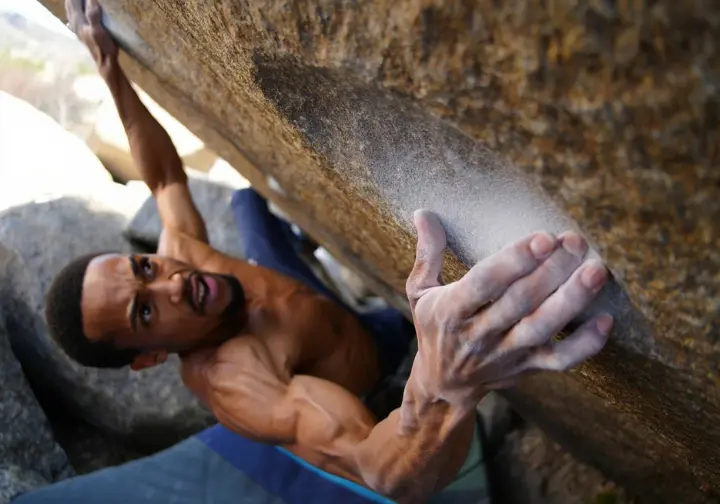
The V17 (9A Font) climbing grade in bouldering represents an extreme level where raw power, minute precision, and sophisticated training converge. This section showcases the boulder problems and climbers at this apex, detailing the hardest boulder problem V17 and the unique challenges of 9A bouldering.
Burden of Dreams (V17): The Finnish Benchmark
Nalle Hukkataival’s first ascent of Burden of Dreams in Lappnor, Finland, in October 2016, established the world’s first proposed V17 (9A Font) boulder problem. This iconic boulder is a short, 4-metre granite face on a 45-degree overhang, characterized by 5-8 intensely difficult moves on tiny, sharp crimps and crystals. Hukkataival, a renowned climber, dedicated three to four years to projecting this climb. Wikipedia offers more details about Burden of Dreams.
Burden of Dreams has since been confirmed by several top climbers, including Will Bosi (April 2023), Simon Lorenzi, and Elias Iagnemma, solidifying its V17 status. Bosi’s ascent was notable for his use of 3D-printed replicas of the holds for training, a growing trend. The first move alone is considered to be around V13 (8B). The problem’s difficulty lies in its extreme finger strength requirements and the precision needed to link the desperate hard moves. Bosi noted the first move as “the hardest move I’ve done so far.” Planetmountain.com covered Will Bosi’s repeat of Burden of Dreams. Success on such problems often involves experience in navigating difficult granite bouldering terrain.
Return of the Sleepwalker (V17): Woods’ Power Endurance
Daniel Woods established Return of the Sleepwalker in Red Rock Canyon, USA, in April 2021, proposing V17 (9A Font). This boulder problem is a sit start to Jimmy Webb’s existing V16 (8C+) boulder, Sleepwalker, adding a difficult V13 (8B) sequence into the original problem without any rest. This significantly increases the overall difficulty and endurance required for the rock climb. The problem has been confirmed at V17 by Will Bosi and Noah Wheeler, validating Woods’ initial climbing grade proposal. It showcases powerful individual moves and the ability to link sustained hard bouldering on small holds. Red Rock Canyon is known for its sandstone, offering a different texture and climbing style compared to granite V17s like Burden of Dreams.
Return of the Sleepwalker exemplifies pushing standards by adding harder starts to existing top-end problems, creating new testpieces that demand even greater levels of strength and resilience. The ability to link a V13 sequence directly into a V16 problem highlights the incredible physical capacity of these athletes. Gripped Magazine provides a list of global V17 boulders. Many climbers enjoy bouldering in Red Rock Canyon due to its unique features. This is considered one of the hardest routes in bouldering.
Alphane (V17) & Megatron (V17): Raboutou’s Contributions
Shawn Raboutou, a top boulderer, has been a significant force at the V17 level, establishing Alphane in Chironico, Switzerland (April 2022), and Megatron in Eldorado Canyon, USA (also in 2022). Alphane, a granite boulder problem, consists of a V14 (8B+) start into a V15 (8C) section, followed by a V10 (7C+) top-out, demanding both power and endurance. Alphane has seen an impressive number of repeats from top climbers including Aidan Roberts, Will Bosi, Simon Lorenzi, Jakob Schubert, and Sean Bailey, largely confirming its V17 (9A Font) climbing grade and establishing it as a key benchmark at this level. This number of repeats for a V17 is notable and helps solidify the grade within the climbing community. You can find more information on V17 bouldering at HardClimbs.info.
Megatron, currently unrepeated, adds a V15 (8C) sit start into Daniel Woods’ V14 (8B+) problem, Tron. This approximately 17-move short boulder problem is another example of Raboutou pushing difficulty by linking extremely hard sequences, showcasing his strength in establishing cutting-edge boulders. Boulderflash offers details on new V17 problems and future possibilities. Conquering these climbs requires elite finger strength for micro holds.
The Expanding V17 Landscape and Notable Female Ascents
The V17 (9A Font) climbing grade is seeing a growing number of proposed boulder problems, with climbers like Charles Albert (L’Ombre du Voyageur), Aidan Roberts (Spots of Time, Arrival of the Birds), Sean Bailey (Shaolin), Nathaniel Coleman (No One Mourns the Wicked), and Elias Iagnemma (The Big Slamm) adding to the list in late 2023, 2024 and early 2025. Many of these await repeats for broader grade confirmation, but they indicate a clear progression at the highest level of bouldering. While no woman has yet climbed V17, female climbers are making incredible progress at the elite end of bouldering. Katie Lamb’s ascent of The Dark Side, graded V16 (8C+), in March 2025, was a landmark achievement, marking the first female ascent at this grade. Gripped Magazine reported on Katie Lamb’s historic V16 ascent.
The Dark Side is described as ultra-technical climbing and subtle. Lamb also climbed Box Therapy (V15/V16), highlighting her position at the forefront of female bouldering. These ascents demonstrate a significant narrowing of the gap and showcase the immense talent pushing female bouldering standards. For context on the grade below, SI.com provides insights into understanding V16 difficulty. Even at the elite level, foundational bouldering techniques for all levels remain important.
Beyond Bolts: The “Hardest” in Trad, Big Wall, and Alpine Realms
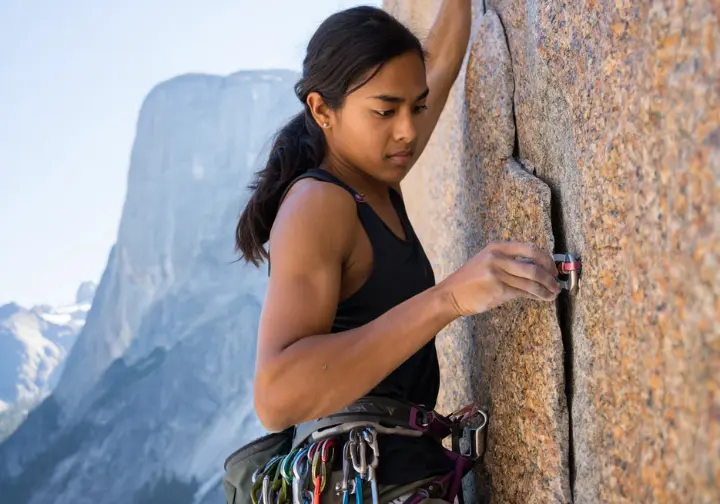
The definition of “hardest” expands in disciplines like traditional, big wall, and alpine climbing, where difficulty encompasses not just physical moves but also risk, gear placement, exposure, length, and severe environmental challenges. This section explores what is the hardest rock climbing route in the world when these factors are considered.
Traditional Climbing Apex: Skill, Boldness, Ethics
Defining the “hardest” traditional (trad) climb involves a complex interplay of technical climbing difficulty (the physical moves), the psychological stress of placing gear on lead, the potential for long and dangerous falls (runouts), and the mental fortitude required. Climbing grades like the British E-system (e.g., E11, E12) attempt to capture this holistic challenge, which is distinct from the pure physical grading of sport climbing. Jacopo Larcher’s Tribe in Cadarese, Italy, is a significant trad climbing route at the apex of trad difficulty, proposed by some to be around 9a (5.14d) trad. Larcher invested six years in this project on an overhanging prow with slopey holds and sparse but reportedly safe protection in the crux. James Pearson made the second ascent, further highlighting its status. HardClimbs.info lists many iconic hard trad ascents. This is true tough trad climbing.
James Pearson’s Bon Voyage in Annot, France, graded E12, is another benchmark. Adam Ondra, on the second climb, suggested it would be a “very solid and specific 9a” if bolted, calling it one of the best and potentially physically hardest trad routes globally. It features a traverse on shallow pockets into a technical, runout arête. Dave MacLeod’s Rhapsody (E11 7a) at Dumbarton Rock, Scotland, was the world’s first E11, involving an unprotected French 8c+ section above the last gear, risking 20+ metre falls. Other notable hard trad routes include Recovery Drink (5.14c trad), Cobra Crack (5.14b trad) – a famous crack climbing testpiece – and Magic Line (5.14c trad), showcasing the depth of high-end trad climbing. Wild Country detailed James Pearson’s Tribe repeat. A deep appreciation of this style comes from understanding traditional climbing ethics and skills.
Big Wall Free Climbing: Vertical Oceans of Difficulty
The “hardest” big wall free climbs are characterized by the sheer length of the route (many pitches), sustained high-level difficulty over multiple days, complex logistics (hauling gear, using portaledges), and significant exposure. These ascents are monumental undertakings of endurance and skill. The Dawn Wall on El Capitan, Yosemite, stands as the epitome of hard big wall free climbing, graded 5.14d (VI) over 32 pitches. The first free ascent by Tommy Caldwell and Kevin Jorgeson in 2015 was a 19-day push, capturing global attention. This big-wall rock climb features multiple pitches of 5.14 difficulty, including notoriously difficult traverse pitches.
Adam Ondra made a swift second ascent of The Dawn Wall in 2016, completing it in just eight days, showcasing his exceptional ability. More recently, Sébastien Berthe completed the third ascent in early 2025, facing challenges like winter conditions and a back injury, and notably approaching some pitches with stylistic differences. Planetmountain.com covered Seb Berthe’s Dawn Wall repeat. While not as technically difficult in its hardest single pitch, Eternal Flame (5.13a) on Nameless Tower in Pakistan, at high altitude (6250m), represents another pinnacle of big wall free climbing due to its remote alpine setting. Free ascents by climbers like Alex and Thomas Huber, and later by Babsi Zangerl and Jacopo Larcher (onsight), are testament to its challenge. You can read about Jacopo Larcher’s Eternal Flame ascent on his website. These achievements showcase incredible free climbing on El Capitan and beyond.
Alpine Technical Rock: The Ultimate Combination
Defining “hardest” in technical alpine rock climbing involves combining extreme technical rock difficulty with the severe challenges of high altitude (thin air, extreme cold), remoteness (complex logistics, difficult rescue), objective hazards (avalanches, rockfall, seracs, unpredictable weather), and often, long and committing routes. Success requires a vast skillset and resilience. Mountains like K2 (Pakistan/China), known as the “Savage Mountain,” present formidable alpine rock challenges. Routes like the Abruzzi Spur feature the dangerous “Bottleneck,” and its unclimbed East Face represents a monumental challenge. Annapurna I in Nepal is extremely avalanche-prone, with its South Face being a notorious and difficult climb. Actual-Adventure.com lists some technically difficult mountains to climb.
The unclimbed Northeast Face of Masherbrum in Pakistan, dubbed the “Impossible Wall,” is considered an extreme objective at the frontier of alpine technical climbing. These climbs are often expeditions in themselves, pushing human limits in the most unforgiving environments. MountainHouse.com provides an overview of hard alpine climbs. This ties into the broader concept of defining the most difficult mountain to climb and involves aspects of mountaineering.
Understanding the Numbers: A Guide to Climbing Grades
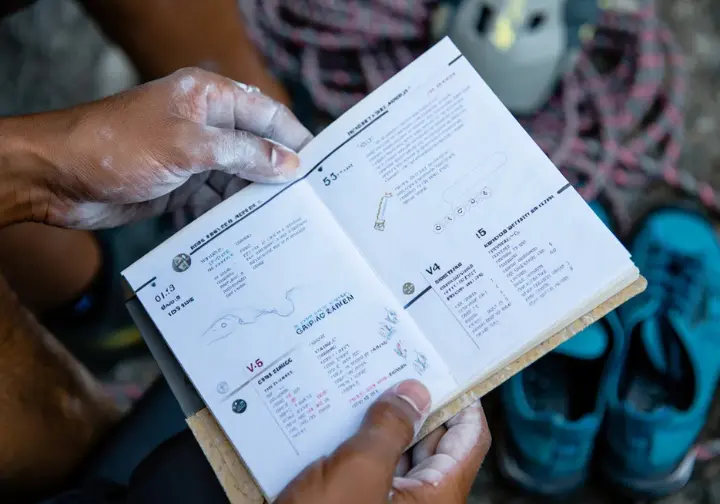
This section demystifies climbing grades, explaining common systems, their evolution, and how they quantify difficulty, helping readers understand the grade of the hardest route.
Evolution of Grading Systems
Climbing grades have evolved significantly over time, reflecting the continuous push by climbers to tackle harder routes and the need for more nuanced ways to describe difficulty. Early systems like the Benesch and Welzenbach scales were foundational but have been superseded by more detailed modern systems. This evolution is a direct response to the increasing standards in the sport and part of rock climbing history. The primary purpose of a grading system is to provide a common language for climbers to communicate the relative difficulty of a climb. However, especially at the elite end where there are few climbers and reference points, grading can be subjective and often relies on the first climber’s proposal, later refined by community consensus through repeat ascents. Wikipedia offers a detailed history of climbing grades, which is integral to the history of rock climbing.
Understanding this historical context helps climbers appreciate that grades are not static, absolute values but rather dynamic assessments that can change as new benchmarks are set or as routes are re-evaluated by the broader community. This is particularly true for cutting-edge climbs where the “hardest” is constantly being redefined. Method Climbing discusses subjectivity in climbing grades. This knowledge contributes to understanding climbing etiquette and standards.
Key Grading Systems Explained (YDS, French, V-Scale, E-Grades)
The Yosemite Decimal System (YDS) is primarily used in North America for roped climbing. It starts with “5.” followed by a number (e.g., 5.15), and for routes 5.10 and harder, letters (a, b, c, d) denote increasing difficulty within that number grade. For example, 5.15d is harder than 5.15c. French Sport Grades are widely used internationally for roped climbing. They use numbers (e.g., 9) followed by letters (a, b, c) and a “+” to indicate intermediate steps (e.g., 9b+ is harder than 9b). A 9c climbing route is currently the highest proposed for sport climbing. The V-Scale (or Hueco Scale) is predominantly used in North America for bouldering. It starts at VB (beginner) and V0, and currently goes up to V17, with higher numbers indicating greater difficulty. The Font Scale (Fontainebleau grades) is the European and increasingly international standard for bouldering, using numbers with letters (A, B, C) and a “+” (e.g., 9A Font is equivalent to V17). REI provides a good explanation of climbing ratings.
British Trad Grades (E-grades) are unique as they provide a dual rating for traditional climbs: an adjectival E-grade (e.g., E11) indicates the overall seriousness, commitment, and sustained difficulty, while a technical grade (e.g., 7a) denotes the hardest single move. This system attempts to capture the complex interplay of physical difficulty and risk inherent in trad climbing on a cliff. Sportrock offers a guide to climbing grade systems. Comprehending these systems is part of learning the basics of climbing terminology.
Proposed vs. Confirmed: The Nuance of Top Grades
At the absolute cutting edge of climbing, when a route or boulder problem is first climbed and proposed at a new highest grade (like 9c sport or V17 bouldering), this grade is initially just that – a proposal by the first ascensionist. There are very few climbers, if any, with experience on existing climbs to directly compare it to, making the initial assessment of actual difficulty inherently subjective to some extent. A climbing grade becomes “confirmed” or more solidified within the climbing community through a process of repeat ascents by other elite climbers. If subsequent ascensionists, with their own diverse experiences and strengths, agree with the initial proposed grade, it gains more legitimacy and becomes a benchmark. This consensus is crucial for the grade’s acceptance. Wikipedia has a page on understanding grade milestones in climbing.
Sometimes, proposed grades are adjusted after repeats. For example, Alex Megos initially proposed 9c for Bibliographie, but after several repeats by climbers like Stefano Ghisolfi and Seb Bouin, a consensus formed around 9b+, leading to a downgrade. This highlights the dynamic and community-driven nature of establishing grades at the limit. Therefore, when discussing the “world’s hardest climbing route right now,” it’s important to distinguish between routes with proposed grades that are still unrepeated (like Silence, DNA, B.I.G.) and those whose grades have been supported by multiple ascents (like Burden of Dreams or Alphane at V17). This transparency is key to an authoritative discussion. Gripped Magazine touches upon factors influencing grade perception in bouldering. This relates to understanding notoriously stiff Joshua Tree grades where local consensus plays a role.
The Human Element: What Makes These Climbs So Hard?
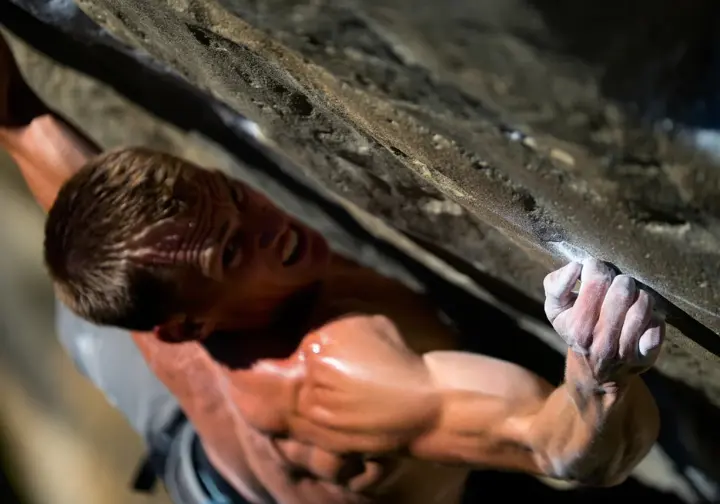
This section explores the multifaceted components of elite difficulty: extraordinary physical attributes, refined technical skills, and immense mental fortitude required by a climber, alongside the specific challenges posed by the routes themselves, addressing what makes these routes so exceptionally difficult.
Physical Prowess: Strength, Power, Endurance
Climbing the world’s hardest routes demands an extraordinary level of physical prowess, starting with maximal finger strength, especially relative to body weight. Elite climbers can hang off minuscule edges and pockets that would feel unusable to most, a result of years of dedicated fingerboard training and climbing on difficult rock. This strength is fundamental for gripping the often poor holds found on 9c sport routes or V17 boulder problems. Raw power is another critical component, enabling climbers to execute explosive dynamic moves (dynos) to reach distant holds or to generate force quickly for powerful, low-percentage moves. This is particularly evident in bouldering but also crucial for overcoming hard cruxes on sport routes. This power is often built through campus board training and specific power-oriented exercises. WeckMethod discusses functional strength training for climbers.
Elite climbers possess incredible endurance – both power-endurance (the ability to do many hard moves in a row) and long-endurance (the ability to sustain effort over the entire route of a long sport route or a multi-pitch climb). Routes like DNA and B.I.G. are prime examples where sustained difficulty requires climbers to maintain a high output for many minutes or even hours. Climbapedia outlines general attributes of a good climber. Developing these attributes often involves specific strength exercises for climbing performance. Only a strong climber can tackle such challenges.
Technical Mastery: Movement and Precision
Technical skill is paramount at the cutting edge of climbing, involving the mastery of complex movements and precise body positioning to make the most of minimal holds. This includes efficient footwork, using the feet like a second pair of hands to push, smear, edge, and hook, thereby reducing the load on the arms. Elite climbers exhibit incredible body tension, allowing them to stay connected to the wall on steep overhangs. Specialized techniques become crucial on the hardest routes. For example, Adam Ondra utilized intricate kneebars on Silence for crucial rests and to enable certain moves. Dynamic moves (dynos) require precise coordination and timing, while static control on tiny crimps or slippery slopers demands immense core strength and balance. Navigating varied rock features like tufas, arêtes, and prows also requires a diverse technical climbing toolkit. Rock-About.com explains some challenges of advanced rock climbing.
Reading the rock, to visualize sequences, and to adapt movement patterns to subtle nuances in the holds and body position is a hallmark of technical mastery. This often involves years of experience climbing on diverse rock types and angles, honing an intuitive understanding of movement. For instance, the subtle finesse Katie Lamb described for The Dark Side (V16) highlights this advanced technical understanding. For those interested in structured improvement, a Reddit thread discusses training for climbing periodization, which can be a useful resource. A key component of this is mastering bouldering technique.
Mental Fortitude: The Psychological Battle
The mental game is arguably as important as physical prowess when tackling the world’s hardest climbs. This includes the psychological strength to manage fear – fear of falling, especially on runout trad routes or highball boulders, and also fear of failure after investing enormous amounts of time and energy into a project. Jakob Schubert explicitly called his ascent of B.I.G. his “biggest mental battle.” Perseverance and motivation are critical. Projecting a route at one’s limit can take months or even years, involving hundreds of failed attempts. Maintaining motivation, learning from each attempt, and dealing with setbacks like poor conditions or minor injuries requires immense mental resilience. Czech climber Adam Ondra’s multi-year effort on Silence and Sébastien Bouin’s 250+ attempts on DNA exemplify this dedication. Mapo Tapo features an interview on mental training for climbing.
Solving complex sequences under pressure, staying focused, and to execute perfectly when a send is possible are also key mental skills. Elite climbers often describe entering a state of “flow” or “inner quiet” during successful ascents. This mental control allows them to unlock their full physical potential. Dave MacLeod’s blog offers insights into the mindset for extreme challenges, such as his posts on Dave MacLeod on E11 trad climbing. A crucial aspect is maintaining mental focus during climbs.
The Future of Hard: What Lies Beyond 9c and V17?
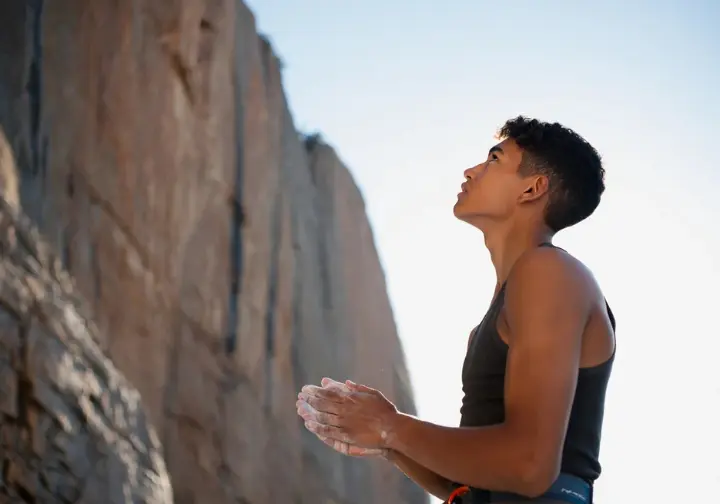
This section looks ahead, considering the potential for future grade progression, the role of new training methodologies, and the climbers who might push these boundaries even further, speculating on the evolution of the “world’s hardest climbing route” and what the next tougher ascent might be.
The Next Grade: Pushing to 9c+ or V18
With 9c sport routes and V17 boulder problems now established, the climbing world naturally looks towards the next logical steps: 9c+ (5.16a) in sport climbing and V18 (9A+) in bouldering. While no routes or problems have yet been confirmed at these grades, they represent the hypothetical next frontier of human climbing potential. Achieving these grades will likely require even more specialized training, potentially finding unclimbed lines with an even higher concentration of difficult moves, or linking existing hard routes/problems in new and more challenging ways. Climbers like Adam Ondra have speculated about the possibility of 9c+ but acknowledge the immense difficulty in finding and completing such a steep line. Climber.co.uk reported on Bosi on V18 predictions.
Will Bosi suggested a V18 is still some way off, indicating the significant jump in difficulty that would be required. The progression to these next grades will likely be incremental and depend on the vision and dedication of the world’s top climbers. For insights into future trends, one might look at discussions like Jakob Schubert’s view on climbing trends (assuming a relevant interview). Reaching these levels will depend on advanced training equipment for elite performance.
Training Innovations and Young Guns
Innovations in training methodology are playing a significant role in pushing climbing standards. The use of 3D-scanned and printed replicas of holds from specific projects, as famously employed by Will Bosi for Burden of Dreams, allows climbers to train highly specific movements and build requisite strength even when far from the actual climb. This “democratization of beta” and access to precise training tools could accelerate progress. Sophisticated home climbing walls, advanced hangboard protocols, and a more scientific approach to physical conditioning and recovery are becoming standard for elite climbers. The sharing of training knowledge and detailed beta through online platforms and videos, sometimes found on sites like climbernews.com (as a type of outlet, not a direct source here) or through athlete channels, also contributes to a faster collective learning curve within the top echelon of the sport. Climbing.com highlighted some of the greatest climbing ascents of 2023, often showcasing new talents.
A new generation of exceptionally talented young climbers is constantly emerging, often benefiting from starting at a young age with access to modern training facilities and coaching. These “young guns” are highly motivated and are quickly reaching elite levels, and they will undoubtedly be the ones to watch for future breakthroughs in difficulty across all disciplines. Adam Ondra often shares Ondra on Silence project details and his process, inspiring others. There are even forms of innovative training for young climbers being developed in specialized camps. These strong climbers are the future.
Conclusion: The Unending Pursuit of the Possible
The “world’s hardest climbing route” is a constantly shifting title, reflecting the relentless human drive to explore the limits of physical and mental possibility. Current benchmarks like Adam Ondra Silence, Seb Bouin DNA, Jakob Schubert B.I.G. in sport climbing, and Burden of Dreams (V17) in bouldering are testaments to incredible dedication and skill. These incredible routes represent the current top of the difficulty scale. Understanding difficulty across diverse disciplines—from the calculated risks of trad climbing to the immense endurance of big walls and the harsh realities of alpine climbing—provides a richer appreciation for the sport’s breadth.
The achievements of climbers like Adam Ondra, Seb Bouin, Jakob Schubert, Nalle Hukkataival, Brooke Raboutou, and Katie Lamb inspire climbers of all levels to push their own boundaries, fostering a deeper understanding of what dedication can achieve on any climbing route. As training evolves and new talents emerge, the definition of “hardest” will continue to be rewritten, ensuring that rock climbing remains a dynamic and exciting arena of human endeavor. This blog will continue to follow these developments, providing comprehensive insights for dedicated climbers.
Frequently Asked Questions about the World’s Hardest Climbing Routes
What is currently considered the hardest sport climbing grade achieved? >
Who are some of the climbers consistently pushing the limits of hard climbing? >
How does the “hardest” bouldering problem compare to the “hardest” sport route? >
Why do grades for the hardest climbs sometimes change? >
We are a participant in the Amazon Services LLC Associates Program, an affiliate advertising program designed to provide a means for sites to earn advertising fees by advertising and linking to Amazon.com. As an Amazon Associate I earn from qualifying purchases. We also participate in other affiliate programs. The information provided on this website is provided for entertainment purposes only. We make no representations or warranties of any kind, expressed or implied, about the completeness, accuracy, adequacy, legality, usefulness, reliability, suitability, or availability of the information, or about anything else. Any reliance you place on the information is therefore strictly at your own risk. Additional terms are found in the terms of service.










